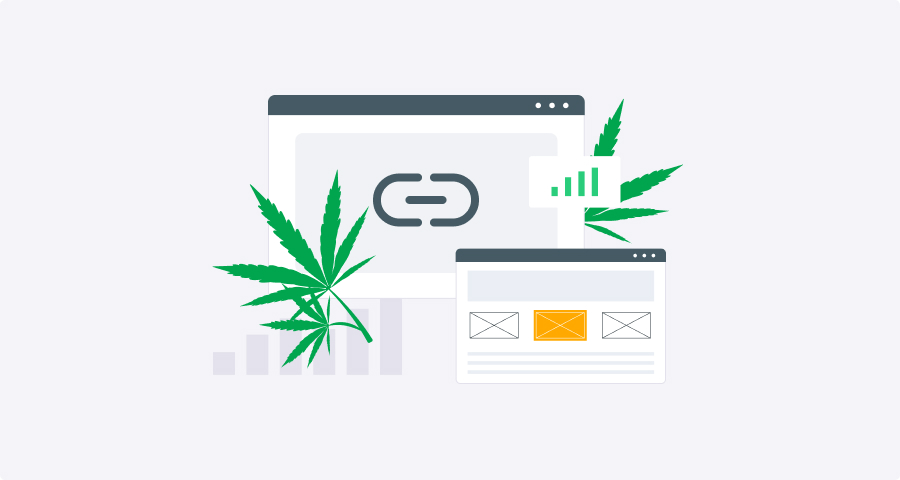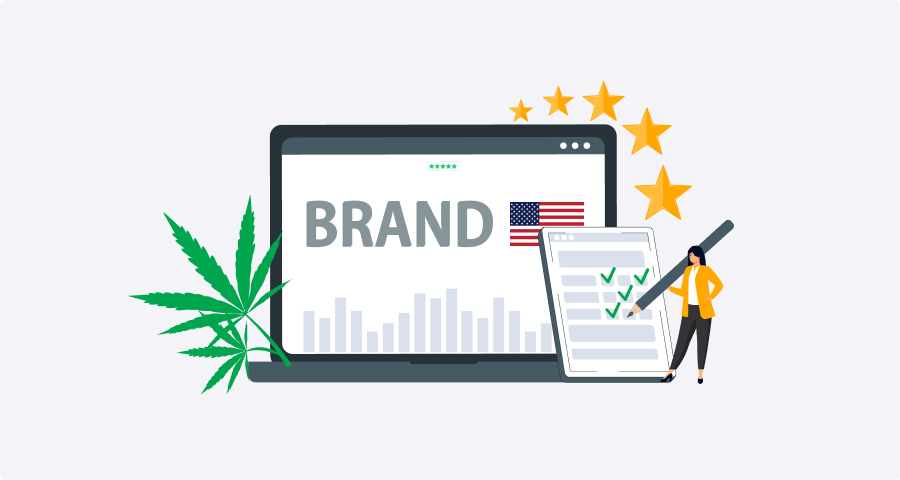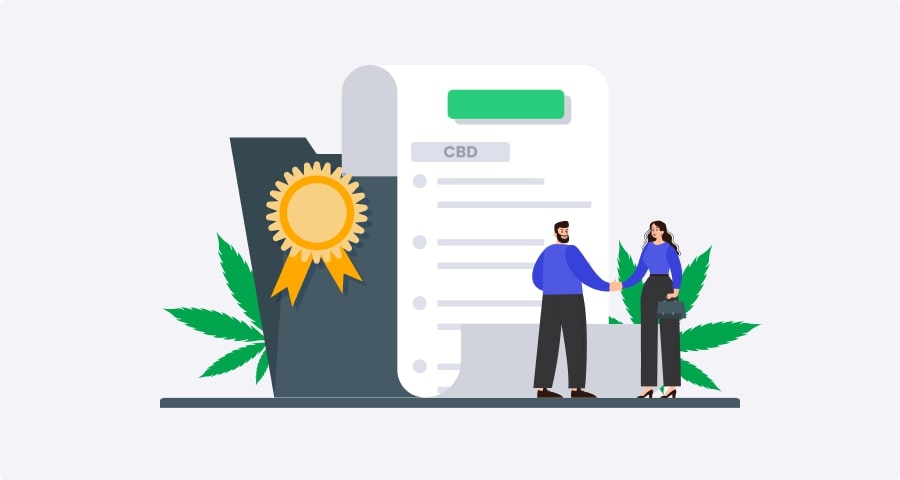How to Track and Measure SEO Results in the Cannabis Niche?

Search Engine Optimization is an extremely popular service among business and website owners. The reason for this is the fact that it effectively promotes the website thus attracting new customers and making the brand recognizable. It is one of the most efficient ways to expand your business and make it visible, especially when it comes to such a specific niche as cannabis one.
In that way, many cannabusiness owners address SEO agencies in order to optimize their websites. It is necessary to understand that this service is not cheap and usually the strategy is developed for several months. Some businesses use the services from the time when the website was created and throughout its existence. So, it is only logical that the clients want to understand the results and sometimes even control the process. Let’s have a look at the main ways of tracking SEO results when it comes to the cannabis niche.
Tracking the Performance
So, after creating useful and interesting content on your site and following all the steps developed by the professional, how do you plan to track how well the site is performing? At first glance, there is a fairly simple answer to this question – track by key metrics that you need to focus on. However, for each metric, there are several essential factors to consider when measuring your site’s SEO performance.
1. Keyword statistics
Determining the position of your site from a list of keywords, of course, is not the final destination. You cannot pay the agency for ranking. Additionally, search personalization has made it even harder to track results.
But a rough idea of how your site is ranked for major searches can be a useful indicator of site status. Ranking high on a range of keywords is a good indicator of a site’s visibility in organic search.
This does not mean that you need to get stuck on positions for any certain query. Remember that your ultimate goal is to drive more relevant traffic, which will allow the growth of your business as a whole. If you sell CBD oils, what is more important to you: that you rank high on the query “buy CBD oils” or outline and implement an SEO strategy that will help you sell more oils in the most cost-effective way?
Various paid and free tools can help you monitor site positions. Most of them are similar in functionality but also do not forget about monitoring positions in local or mobile search results. If you’re a small business or just getting started with SEO, we’d recommend picking a free and easy-to-use tool and just keeping track of a few keywords that you want to track to assess your progress.
2. Organic traffic
Organic traffic is the best indicator of your SEO efforts. By analyzing organic traffic to your site, you can estimate the actual volume of visitors coming to your site and what they are doing there. You can easily measure your organic traffic with many popular analytics tools – they are free and most commonly used.
For example, on Google, you will immediately find statistics on traffic sources and even a more detailed report on organic traffic. It is these statistics and position reports that will give you insight into how SEO works and where the traffic is coming from to your site.
3. Organic leads and sales
Obviously, the primary way to measure SEO results should be through actual leads, sales, revenue, and profits. As with any other marketing tool, you need to understand: how does this activity help increase your profit?
The easiest way is to set goals or track e-commerce using Google Analytics. You can use these metrics to look at organic traffic and goals (or various e-commerce metrics) for a landing page, which means you’re specifically looking at who is converting among visitors who come from organic search (versus people who could have come to your site from contextual advertising, for example).
It seems pretty straightforward. And generally, for most businesses, this is a good way to measure the success of your SEO efforts in the early stages. But, again, there are a few warnings and nuances to keep in mind when using this data. If you are addressing a professional agency like MjSeo Agency, you’ll get regular reports on the effectiveness and results of the promotion.
Web analytics isn’t always perfect. If you are moving from billboards or newspaper ads to online marketing in your business, you are likely to be impressed by the volume and accuracy of the data available. But sometimes there can be data tracking issues. Therefore, we advise you to treat this with some skepticism and from time to time correlate the metrics data, for example, with your real income.
More Ideas for Performance Tracking
If you want to get all the possible information about the SEO results, it is necessary to use more instruments to track them.
1. Leads with SEO
Leads are one of the main final results of promoting your site (only sales are cooler). For some reason, many do not focus on the number of leads, tracking SEO results only by position and traffic and not wondering if this traffic is being converted into anything.
What is a lead?
- a call;
- call-back order;
- various orders;
- subscription to the newsletter;
- downloading a presentation, document, price list;
- booking, etc.
To track the number of leads, you need to set up goals in analytics systems. A benefit for analytics will be the construction of composite goals, where it will be seen at what stage of the form submission the user abandoned the process.
2. Sales from the SEO channel
The final and most crucial performance indicator is what the promotion was started for – sales with SEO. Sales will depend both on how targeted traffic is attracted and on the sales department.
There are times when the promotion works well, but, at the very last and most important step, the potential client withdraws. For example, a user comes to a landing page, examines the information and makes sure of the quality of the service or product, and makes a call, but an inexperienced specialist spoils all the work done.
Therefore, it is very useful to analyze calls and requests from time to time to find out where there are problems.
3. Percentage of phrases in the Top 10
This is perhaps the most popular indicator by which the effectiveness of promotion is assessed, but if done incorrectly, it can be misleading.
First, the number of phrases is important. There should not be too few of them, otherwise, if several queries of the same type hit the Top, it will seem that the percentage of phrases in the Top has grown significantly. The number of phrases selected for periodic polling depends on the size of the project, but for representativeness, it should not be less than 50-100.
Secondly, the composition is important. When compiling a semantic core for a survey, it is necessary to include various groups of queries and not to add phrases of the same type.
Third, do not add too low-frequency phrases to the survey. A few low-frequency phrases can go to the Top and show a picture of the growth of positions, but in fact, the traffic will hardly increase.
4. Behavioral factors
Behavioral factors indirectly show the results of the promotion, or rather even improve the quality of the site, which is interrelated.
Behavioral factors include:
- time spent on the site;
- refusals;
- the number of pages viewed;
- activity on the page (clicks, scrolling);
- percentage of returning users;
- adding a site to bookmarks, etc.
Most of the indicators can be tracked in Google Analytics.
5. ROMI (return on investment in SEO)
ROMI (return on marketing investment) shows whether your investment in website promotion will pay off.
ROMI = SEO Profit/SEO Costs * 100%
ROMI must be positive, it has no normative value. Whether ROMI is good can only be understood by comparison, for example, with other traffic sources.
Does Your Site Need SEO at All?
Evaluation of the effectiveness of the promotion will show whether it is advisable to use SEO promotion for your site. There are situations when search engine optimization is likely to be ineffective.
For example, if:
- aggregator sites prevail in the search results when analyzing the competition for main queries;
- there are too few search queries on the topic (even informational and on substitute products). This situation can arise if the product/service is unique and most people do not know about it;
- this type of product/service is more successfully promoted on social networks than in search engines;
- a too small assortment of goods (online store).
In order to understand whether you need SEO promotion, you need a comprehensive assessment.
We've helped dozens of clients achieve remarkable results by increasing organic traffic and revenue for their online businesses. Let us put our expertise to work for you and help you reach new heights of success.








